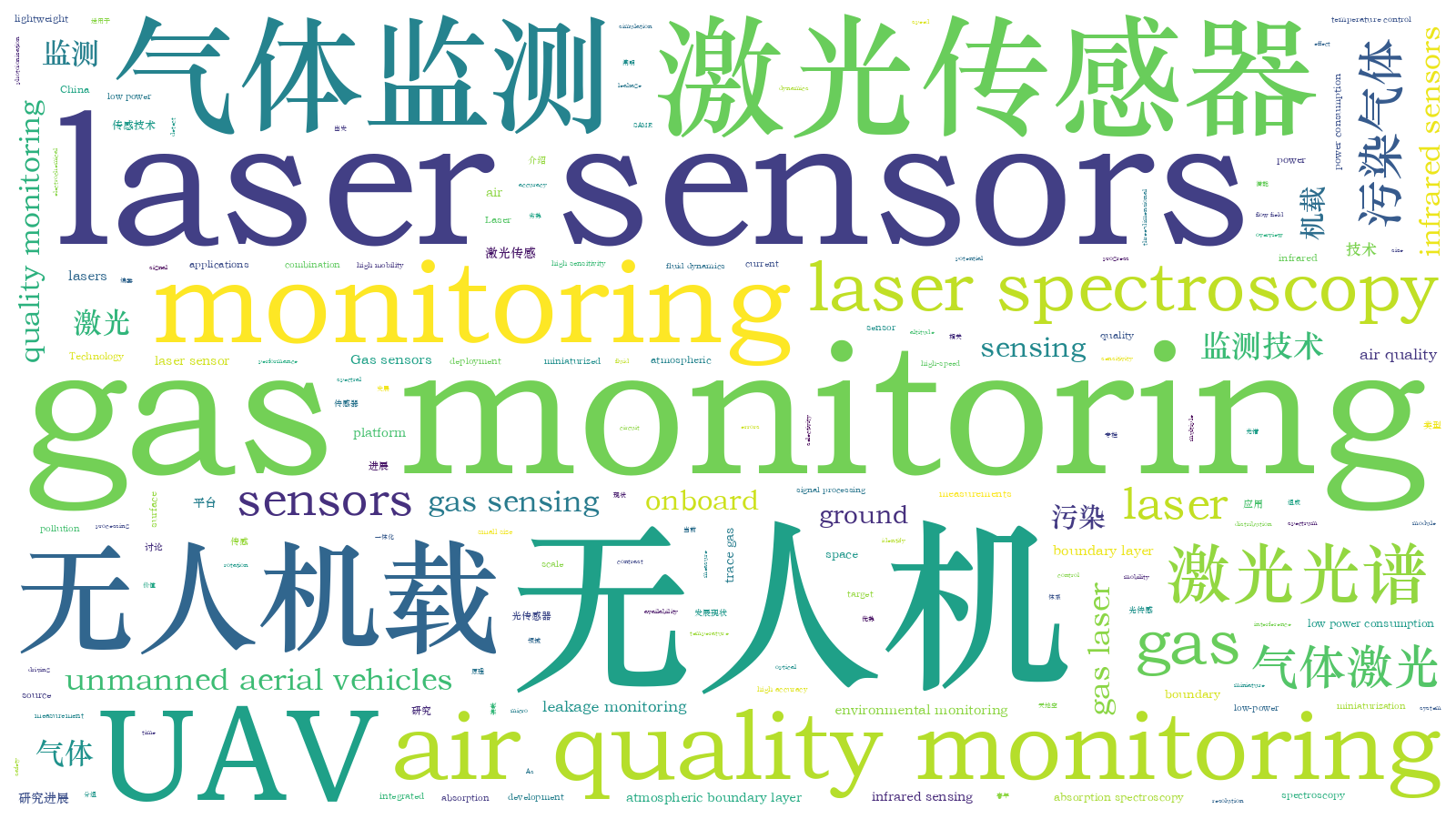无人机载污染气体激光监测技术的研究进展  下载: 669次特邀综述
下载: 669次特邀综述
In China's "ground-air-space" integrated environmental monitoring platform, satellites are positioned in space to observe both atmospheric and terrestrial activities. Meanwhile, numerous air quality monitoring stations are established on the ground to complement the satellite observations. However, conventional monitoring platforms are insufficient in effectively covering the surface boundary layer, which ranges from 0.1 to 1 km above the ground. To this end, unmanned aerial vehicles (UAVs) with high mobility, moderate flight altitude, and easy deployment are employed for gas monitoring in the surface boundary layer when combined with gas sensors. One critical issue with the utilization of UAVs for gas sensing is their endurance, which poses a challenge for onboard gas sensors. These sensors should be small and lightweight with low power consumption to be carried on the UAVs. Currently, gas sensors employed for onboard applications are classified into four categories of electrochemical type, photoionization, catalytic combustion, and infrared sensing. Among them, the first three types of sensors are small, lightweight, and low-power, making them suitable for UAV payloads. However, they are generally less selective, which leads to difficulty in distinguishing target gases. In contrast, infrared sensors rely on the unique spectral fingerprint of gases to identify and detect target gases. When adopted with lasers, they exhibit high sensitivity, resolution, and selectivity, thus reducing measurement errors. As a result, infrared sensors are preferred for onboard gas sensing in UAVs, providing accurate and reliable measurements for monitoring air quality in the surface boundary layer.
The miniaturized sensing module based on laser absorption spectroscopy technology is highly suitable for UAV platforms. With the development of microelectronics technology, the lasers' current driving board, temperature control board, and signal processing circuit can realize the small size and high accuracy. This progress further promotes the miniaturization of UAV-based laser monitoring platforms for pollutant gases. UAV laser monitoring platforms can measure gases in the atmospheric boundary layer, thereby enhancing China's "ground-air-space" integrated monitoring platform. Consequently, a positive effect is produced on China's efforts to build a beautiful world and a community with a shared future for mankind.
The UAV pollution gas laser monitoring platform comprises the UAV platform and the onboard laser sensor. Technological advancements have resulted in various UAV types with varying performance capabilities, which can cater to different task requirements (Fig. 1, Table 1). Pre-deployment tasks such as the availability of multiple UAV simulators, onboard computers, and open-source ground stations guarantee the flight safety of the UAV platform during task execution (Tables 3-4). Gas sensors suitable for UAVs must be small and lightweight, with minimal power consumption. In trace gas monitoring, several miniature optical sensing modules based on laser absorption spectroscopy technology have been experimentally verified (Figs. 2-6, Table 2). To minimize the flow field interference created by high-speed propeller rotation and obtain the most accurate onboard sensor system for the required sensing data, we employ fluid dynamics simulation to optimize and analyze the turbulent distribution around the UAV. The combination of miniaturized laser gas sensors with UAVs has been applied in atmospheric air quality monitoring and natural gas leakage monitoring (Figs. 8-11). Such a combination can achieve three-dimensional measurements of time, space, and spectrum.
Our study provides an overview of current UAV platforms, including their types, advantages, disadvantages, and applications. It also highlights several principles and applications of laser spectroscopy sensing technologies suitable for UAVs. Additionally, we compare various open-source UAV simulators, onboard computers, and ground stations, and examine the challenges and solutions involved in integrating sensors with UAVs. The significant potential and value of employing small-scale laser sensors with UAVs in gas monitoring are also discussed. Finally, we emphasize the development direction for UAV-based pollution gas laser monitoring platforms, which is towards miniaturization and micro scale.
王刚, 武红鹏, 廖洁麟, 魏永峰, 乔建波, 董磊. 无人机载污染气体激光监测技术的研究进展[J]. 光学学报, 2023, 43(18): 1899912. Gang Wang, Hongpeng Wu, Jielin Liao, Yongfeng Wei, Jianbo Qiao, Lei Dong. Advances in UAV Laser Monitoring Technology for Pollutant Gases[J]. Acta Optica Sinica, 2023, 43(18): 1899912.







